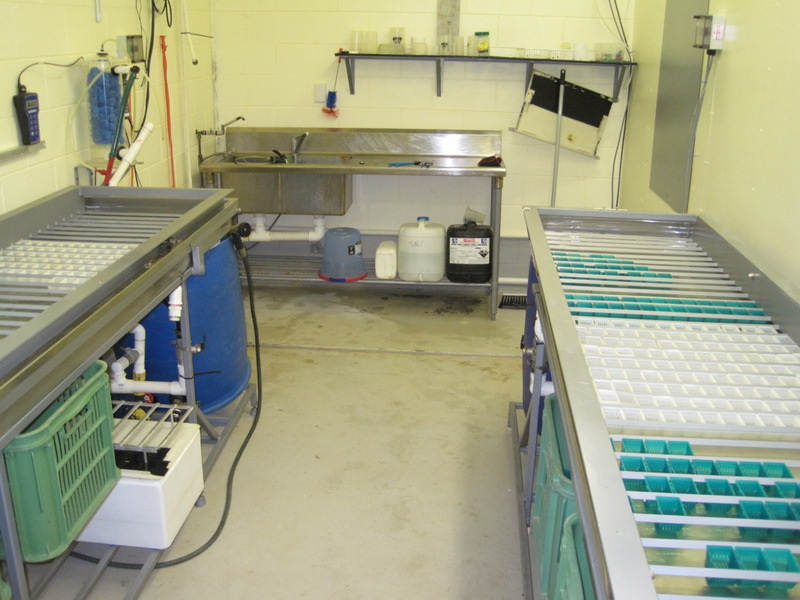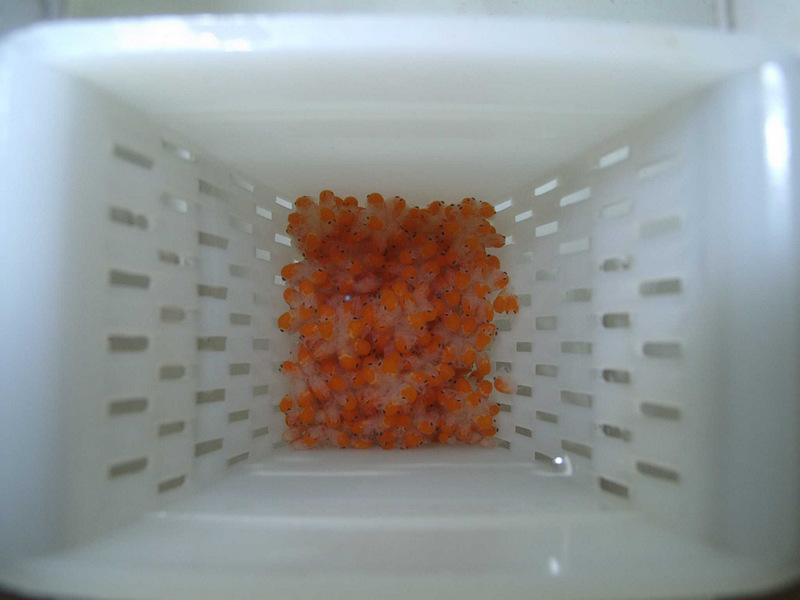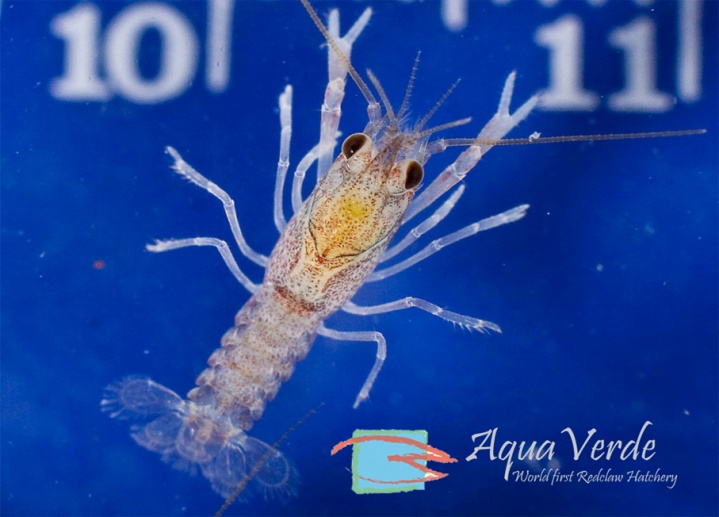In May this year NSWAA member Chris Young was in the far north, tropical region of Cairns. While in the region he organised a visit to AquaVerde Redclaw Hatchery and Aquafarm. The farm is 25 acres on the Atherton Tablelands about one and half hours drive up the range from the coast. On a misty rainy day Chris caught up with Colin Valverde who was kind enough to make time to give Chris and the NSWAA an interview for this article on new developments in the redclaw industry (Cherax quadricarinatus).
Colin & his wife Ursula started AquaVerde 10 years ago. Colin holds post graduate qualifications in Aquaculture from Deakin University and both are active members of the Queensland Crayfish Farmers Association (QCFA ), a group that has been working with the Australian government’s Rural Industries Research & Development Corporation (RIRDC) who have provided significant funding for redclaw projects over the last 7 years.
The first of these projects was a 5 year selective breeding project in cooperation with James Cook University (JCU). Prof Dean Jerry provided the design for the program and the redclaw farmers from the northern branch of the QCFA providing the redclaw, infrastructure and labour. The project resulted in an improvement in hybrid vigor and a faster growing redclaw.
The second RIRDC funded project run by Dr Igor Pirozzi of JCU “Boosting Redclaw industry productivity with improved Nutritional & Feed management” started in August 2012 with a target completion date of August 2015. The project was necessary as industry growth was stagnating partially due to lack of reliable information of nutritional requirements. As a detritivore, redclaw will likely have the capacity to utilize a wide range of low cost plant materials as dietary sources, yet there has been little work published examining alternative feed ingredients for this species.
The project will build on the important ground work laid by the selective breeding project.
Redclaw farmers are eagerly awaiting the results and preliminary negotiations with feed mills have started. This will give these producers a real advantage and a further commercial boost to help lift annual production from its current 65 tons.
The third project is a three year project with Colin as the principle investigator. This project has 3 components and is primarily about increasing survival across the whole farming system and improving husbandry techniques for S3J’s (Stage 3 juveniles are the young craylings just at the point they would normally be leaving the mother).

We can now produce large quantities of S3J’s from a purpose built hatchery that includes incubating eggs that have been removed from the mother. The eggs hatch and go through two larval stages before becoming morphologically adult and can then be stocked direct from the incubators into grow out systems.

The hatchery has become a real game changer and the methods of farming using this system embraces many new ways to stock, handle, grow and reproduce redclaw. Development of Australia’s first egg incubation hatchery was by Colin at his AquaVerde farm which began in 2006 and he has been working hard ever since to improve the efficiency and reliability of the hatchery, but more work needs to be done around this new process.

The first component of this project is to improve hatchery survival by managing bacterial infections using bacteriophages. Dr Lisa Elliot from AusPhage has been working with Colin for a few years and the results have been nothing short of a miracle for helping AquaVerde manage bacteria loads within the system. Anyone wanting to know more about this new field should look it up on the net as it probable has many applications in aquaculture.
The second part of this project is to explore husbandry techniques to increase survival and growth of the freshly produced craylings from the hatchery. For the first time farmers are now capable of receiving a bag of 10,000 craylings (200 grams total) in 5 liters of water and stock a pond with an exact quantity of same age craylings. This new ability forces us to completely reappraise many of the ways we handle and raise the young craylings. Dr Clive Jones of Cairns JCU is heading up this component of the project and has been impressed with the faster growth rates and narrower size variance of hatchery produced craylings.
And finally the third component is to find the cause of an annoying problem the industry has with large redclaw. When large redclaw are harvested and restocked into breeding tanks for example we can sometimes get significant mortalities in the weeks after until mortality rates stabilise. Associate Professor Leigh Owens and a small team of students have been investigating moribund crayfish in an effort to determine what has been killing them as a first step to solving the problem. Survival of broodstock redclaw came to a head during the selective breeding program as it was necessary to minimize the losses so as to capture as much genetics into the program as possible. A few very interesting leads have already been uncovered but we will have to keep an eye on the industry over the next year before details are released.
Australian redclaw producers are well situated to gain from these aquaculture technology advancements and “it’s an exciting time to be in redclaw farming” says Colin.
AquaVerde is well on its way to produce the 1 million craylings needed to begin to satisfy farmers looking at the S3J farming method. The production has been increasing each year and these production numbers give AquaVerde one of the major missing links for commercial production, constant supply ability.
For more information please contact.
Colin Valverde
AquaVerde crayfish
info@aquaverde.com.au
Article by Chris Young, NSWAA, Event Coordinator and Media Representative.